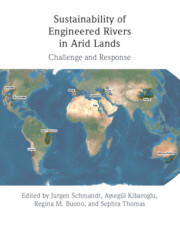Part III - Engineered Rivers
Past, Present, and Future
Published online by Cambridge University Press: 16 September 2021
Summary

- Type
- Chapter
- Information
- Sustainability of Engineered Rivers In Arid LandsChallenge and Response, pp. 77 - 232Publisher: Cambridge University PressPrint publication year: 2021



